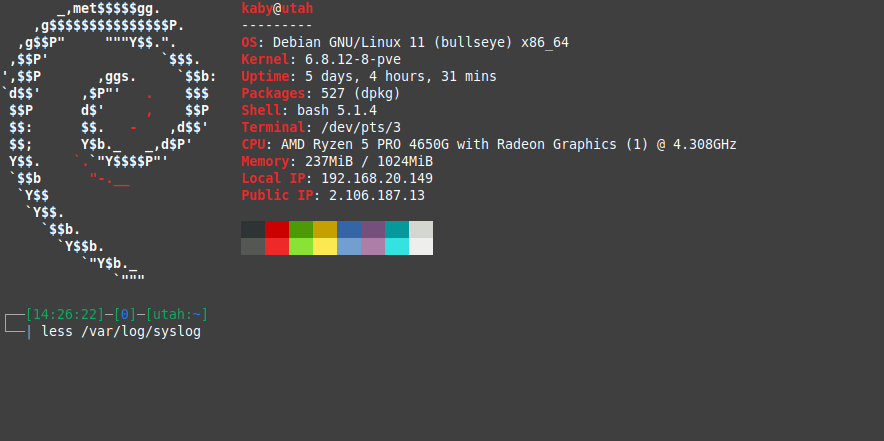The less command is a powerful utility in Linux used for viewing text files or command output interactively. Unlike cat, which displays the entire content at once, or more, which allows limited navigation, less provides advanced navigation and search functionalities, making it ideal for viewing large files.
Why Use less?
- It allows both forward and backward navigation.
- It does not load the entire file into memory, making it efficient for large files.
- It supports searching and pattern highlighting.
- It integrates well with other commands via piping.
Basic Syntax
less [options] filenameFor example, to view the contents of a log file:
less /var/log/syslogNavigating in less
Once inside less, you can use the following key commands:
| Command | Action |
|---|---|
Space | Scroll down one page |
b | Scroll up one page |
Enter | Scroll down one line |
y | Scroll up one line |
G | Go to the end of the file |
g | Go to the beginning of the file |
n | Find next occurrence of a search pattern |
N | Find previous occurrence of a search pattern |
q | Quit less |
Searching in less
- To search for a word, type
/wordand pressEnter. - Press
nto go to the next occurrence. - Press
Nto search backward.
Example:
less /var/log/syslogThen, type:
/kernelThis will highlight all occurrences of “kernel” in the file.
Using less with Piping
You can use less to read output from other commands. Some common examples:
dmesg | less # View kernel logs
ps aux | less # View process list
ls -l /etc | less # View long directory listingAdditional Useful Options
-N: Show line numbers.less -N /etc/passwd-S: Disable line wrapping (useful for wide log files).less -S /var/log/syslog-X: Keep content on the screen after exiting.less -X /var/log/syslog
Conclusion
The less command is a must-know tool for Linux users, especially system administrators and developers dealing with large text files or logs. Its efficient navigation and search capabilities make it far superior to more and cat for reading text content in a terminal.
Try using less in your daily workflow to improve your efficiency with log analysis and text file navigation!

